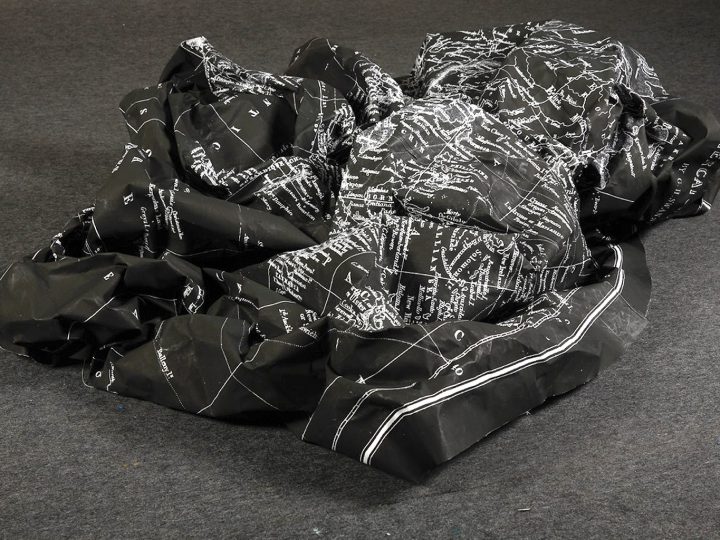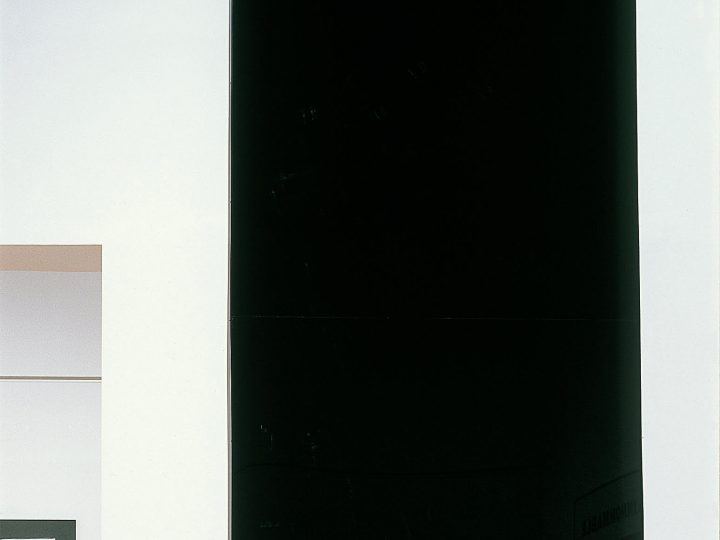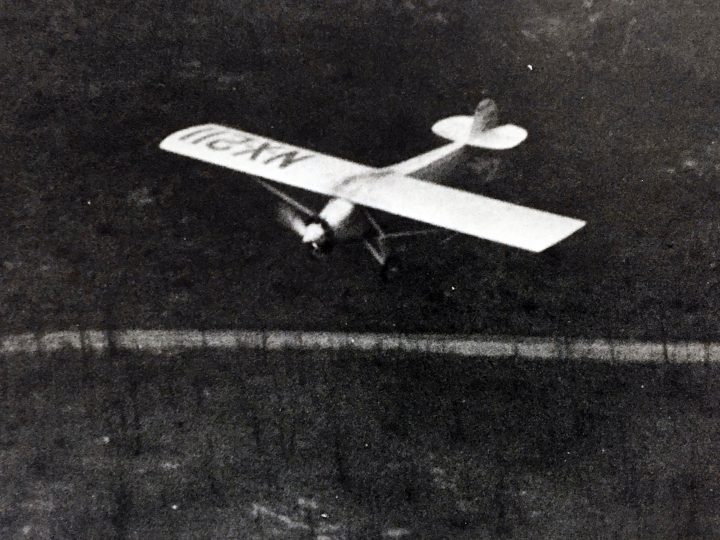
João Louro investigates the iconography of Western civilization through an analysis of the power of the image and the polysemantic nature of language. His works are inspired, shaped and supported by frames of mind, landscapes and notional worlds. The reflection of lights in cities, the fleeting shadows of the central characters in a film noir, the breathtaking speed of a sports car being advertised on TV, the endless desert of North America’s Far West – these and many other modern images are distinctive of his oeuvre. However, the Louro’s derisive approach to them separates him from other contemporary artists. For him, this imagery is inexorably consumed in the visual excesses that define the cultural, economic and political spheres of late capitalism. Nevertheless, it is from this splendour that emerge the lines with which he weaves his vision of the world.
Louro became noticed with his “Blind Images”, a series that has been in progress since the early years of this decade. These works are monochromes (usually black, but more recently white and coloured pieces have also appeared) that are accompanied by quotes from various sources – such as Hollywood films or newspapers – presented in the form of captions in such a way that they create a powerful emotional effect. For example, Blind Image #66 (2004) is composed of a large structure with the following text written on its base: “At 9:02 a.m., with the North Tower of the World Trade Center already in flames, United Airlines flight 175 slams into the South Tower.” Dealing with the terrorist attack of 9/11 by deleting its imagery, the artist calls into question the process by which this event was made into a spectacle, and the way that this logic characterized its global reception by the media.
Made in parallel with the “Blind Images”, “Dead Ends” is another Louro’s well-known series. These works are copies of traffic signs in which, instead of the conventional geographic indications, intellectual expressions stand out. For example, Dead End #1 (2001) has multiple arrows pointing towards different roads, replacing the names of the places with sentences such as “Language is Pact” and “Image is a Fact”, or titles of books that are part of underground literary history, such as Georges Bataille’s La Part Maudite (1946-49). Based on dystopian word plays, which the artist uses to explore the nature of the current mode of discourse, these works show the importance of language in his art, placing it in the conceptual lineage of post-minimalism.
These are some of the main guidelines of Louro’s practice that encapsulate the artist’s proposal for the Coimbra-based Centro de Artes Visuais. “The Hustler” quotes Robert Rossen’s 1961 film of the same name, which explores the mythology of the figure of the gambler. This exhibition presents a body of new works – created specifically for the project – which are focused on the imaginary of the game, as well as a group of recent works that also gravitate around that same universe. Although this is a recent area of interest for the artist, one can find several connections with his output. For example, one might mention the omnipresent equation of the relation between the “American Way of Life” and contemporary culture, especially literature and auteur cinema. Viewed as a critic of the symbolic economy that characterizes our times, the artist emerges in this exhibition as a freethinker examining the human condition.



